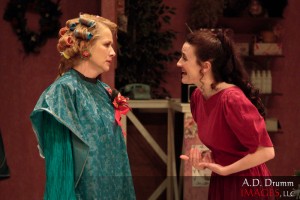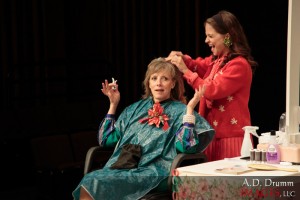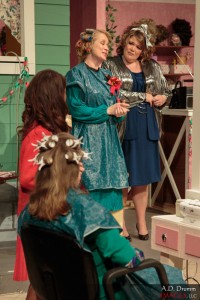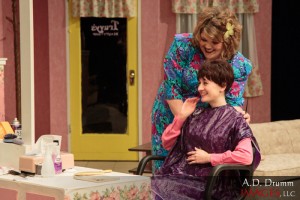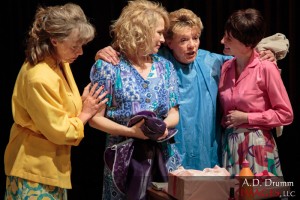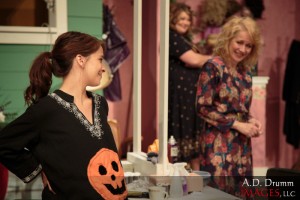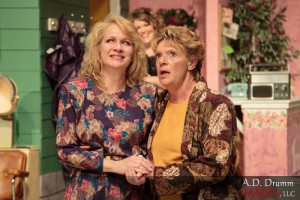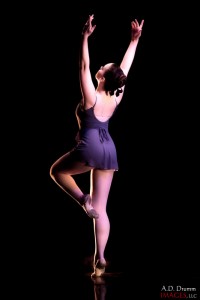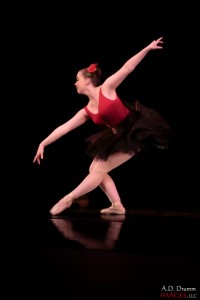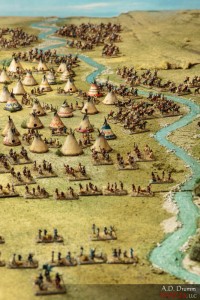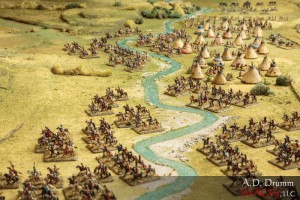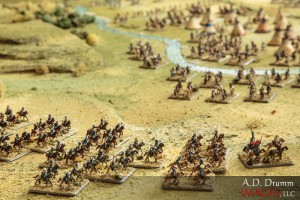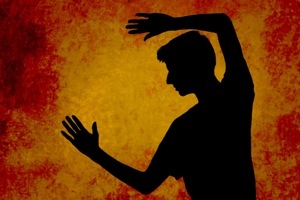I shot Summerset Theatre’s production of Steel Magnolias earlier this month. The show takes place in a beauty shop, as my mom would have called it. An all female cast take us through some important times in the lives of some of the characters as they support one another.
The large, single set is mostly brightly lit with a few exceptions. Much of the set is pink – a color with special meaning in the show – which provides some challenges in the photography department with its similarity to Caucasian skin tone. But there were some vividly colored costumes which help play against that pink.
Lighting was bright, but not as contrasty as we see in some shows. When we’re watching a show, subtle differences in the quantity of light across the stage go pretty much undetected. In the camera, though, these differences are pretty clear. A generally evenly lit stage might have a two stop variation over the span of just a few feet. Fortunately, we have tools to help us keep those differences under control.
Back in the darkroom days, we had similar tools – they just involved cardboard and wires!
When I’m shooting staged shots, I’ll sometimes ask the actors to move a bit to bring them into the light better, or to balance two actors a bit. When trying to tell the story in still images, we don’t always want balance – in fact, we mostly don’t. But when the main subject is in the dimmer area, that’s a problem.
Here, shooting live, I have to just live with the light I’m given. I then rely on Lightroom in postproduction.
An interesting aspect to shooting Steel Magnolias was the number of actors on stage. There were nearly always more than two women on stage at once, and often five or six. This gave me lots of opportunities to find interesting angles and views of two or three of the actors at once. Many compositions were of the sort that I just love to capture, so it was certainly a lot of fun to shoot.
Even with the bright set, there were some good angles that put the actors against the dark background off-stage. I like the contrast this produces. Even with a cool and interesting set, it’s nice to grab a few shots that set the folks off this way.
I was somewhat familiar with the story from seeing the movie years ago, but it’s been a while. I often get lost in the photography, but I was still able to keep an ear to the dialog well enough to follow along. It is important to have a general sense of the story to find that story in the photos I’m taking.
Next up for Summerset is Monty Python’s Spamalot. It was one of the few shows Lynne and I have seen on Broadway, and it’s a fun show for Python fans. It’s a musical theatre version of Monty Python and the Holy Grail complete with the song Knights of the Round Table from the movie. Having it produced in Spam-town will be fun indeed! It opens August 1.
This is a splendid season for Summerset. I Do! I Do! and Steel Magnolias have both been exceptional. No doubt Spamalot will be, too!
